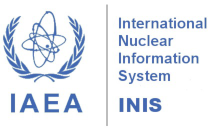New article published in 12(4B) - ENFIR/INAC 2024
Computational Fluid Dynamics study of element type and turbulence model impact on a flow over a spacer grid using Simcenter STAR-CCM+
Abstract: This study presents a numerical investigation into the impact of various mesh element types on water flow results through a representative spacer grid, utilizing Computational Fluid Dynamics (CFD). The study evaluates the variations of the k−ϵ turbulence model available in Simcenter STAR-CCM+ across different mesh types. Three predominant cell types were employed: cartesian, polyhedral, and tetrahedral, alongside three k−ϵ models: Standard Two-layer (STL), Realizable Two-layer (RTL), and Elliptic Blending (EB). The analysis was conducted using a PWR vane-type spacer grid arranged in a 2x2 configuration. The findings demonstrated a strong correlation with experimental data available in the literature. However, the cartesian and tetrahedral meshes attenuated the velocity profiles post-spacer grid. The polyhedral mesh, in conjunction with the RTL and EB k−ϵ models, yielded results more closely aligned with the experimental data. Regarding Secondary Flow (SF), the results indicated a consistent trend of decreasing intensity downstream of the spacer grid. The Polyhedral EB and RTL models exhibited behavior most consistent with the experimental results. Read full article.
Geometrical optimization of PWR spacer grids using GeN-Foam and Genetic Algorithms
Abstract: This paper presents the results of Computational Fluid Dynamics (CFD) oriented geometrical optimization using the GeN-Foam solver applied to subchannels of the fuel assembly in a PWR-type nuclear reactor. GeN-Foam is a coarse mesh OpenFOAM solver designed to study nuclear engineering problems involving the coupled solution of thermohydraulics, neutronics and thermomechanics. However, the solver could be used for complex geometry simulations, enabling multi-scale coupled simulations. To use GeN-Foam under these conditions, the results of the code for complex geometry simulation had to be evaluated. This assessment involved comparing the results obtained with the solver and those presented in a literature reference study. Despite the higher numerical diffusivity of the solver, this comparison demonstrated that GeN-Foam is capable of studying the fluid dynamics of fuel assemblies in nuclear reactors for both coarse and refined geometry conditions. After GeN-Foam was assessed, optimization was performed on subchannels of a fuel assembly using Genetic Algorithms (GA), evaluating the influence of geometric parameters of the spacer grids to minimize pressure drop and maximize secondary flow. Pareto Front solutions were assessed to identify a geometry that best balanced these two objectives. The optimized model showed better results than the reference study, as expected. However, the results also highlight the need to incorporate thermal physics and neutronics to ensure that the optimized solution meets the subchannel´s flow and heat exchange requirements. All tools used in this work are well-established in the literature, free, and open-source. Read full article.






















